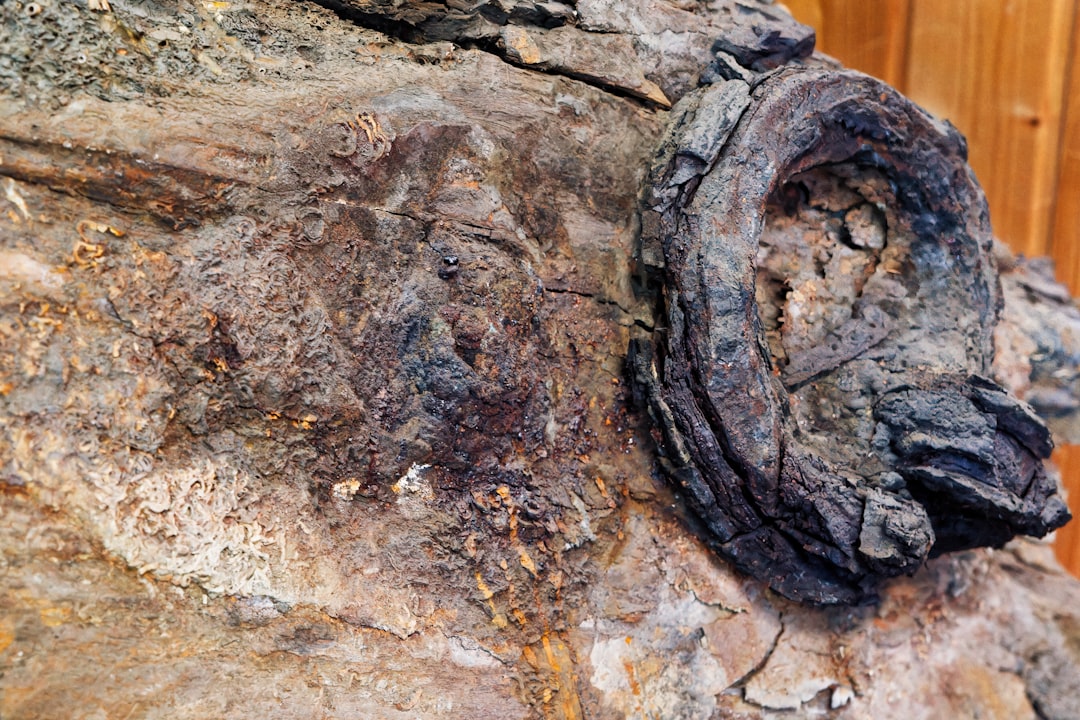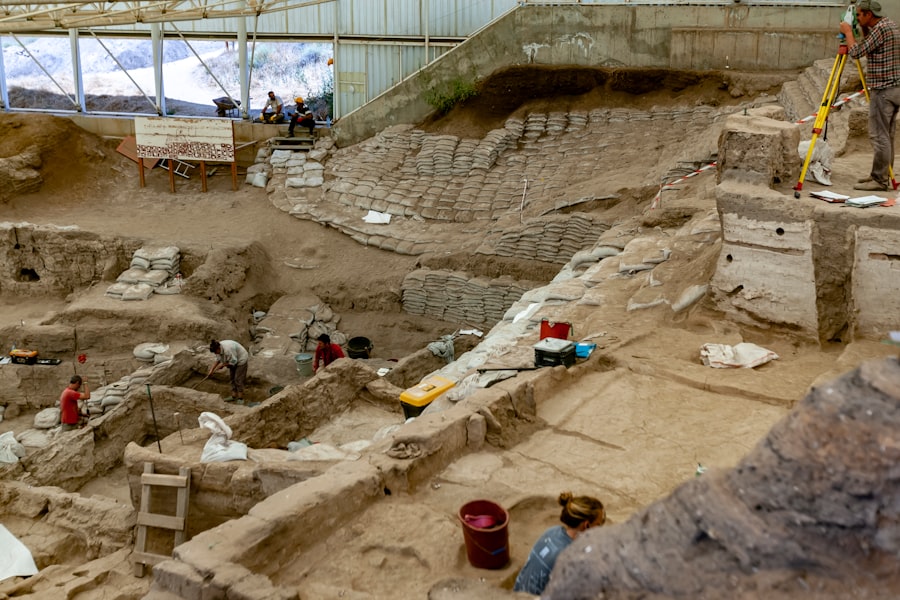
Archeology is a multifaceted discipline that delves into the human past through the systematic study of material remains. This field encompasses a wide range of activities, from excavating ancient ruins to analyzing artifacts and interpreting cultural practices.
By piecing together fragments of history, archeologists contribute to a broader understanding of human civilization and its complexities. The significance of archeology extends beyond mere academic inquiry; it plays a crucial role in preserving cultural heritage. As modern development encroaches upon historical sites, archeologists often find themselves at the forefront of efforts to protect and document these irreplaceable resources.
The discipline not only enriches our knowledge of the past but also informs contemporary discussions about identity, heritage, and the impact of globalization on local cultures. Through their work, archeologists engage with communities, fostering a sense of connection to history that can inspire future generations.
Key Takeaways
- Archeology is the study of human history and prehistory through the excavation and analysis of artifacts and other physical remains.
- Education and training in archeology typically involves a bachelor’s degree in anthropology or archeology, with many professionals pursuing advanced degrees for specialized roles.
- Archeologists are responsible for conducting fieldwork, analyzing artifacts, and interpreting historical and cultural data to understand past societies.
- Archeologists work in a variety of environments, including field sites, laboratories, and academic institutions, often requiring travel and outdoor work.
- The salary and job outlook for archeologists vary depending on experience and specialization, with opportunities in cultural resource management, academia, and government agencies.
Education and Training
Pursuing a career in archeology typically requires a solid educational foundation, beginning with a bachelor’s degree in archeology, anthropology, or a related field. Undergraduate programs often provide students with a broad understanding of human history, research methodologies, and fieldwork techniques. Courses may cover topics such as prehistoric cultures, archaeological theory, and the use of technology in excavation and analysis.
Hands-on experience is crucial; many programs incorporate field schools where students can participate in actual digs, gaining practical skills that are essential for their future careers. For those aspiring to advance in the field, obtaining a master’s degree or even a Ph.D. is often necessary.
Graduate programs allow students to specialize in specific areas of interest, such as historical archeology, bioarchaeology, or cultural resource management. Advanced degrees typically involve rigorous coursework, research projects, and the completion of a thesis or dissertation.
Job Responsibilities

The responsibilities of an archeologist can vary significantly depending on their area of specialization and the nature of their employment. Generally, archeologists are involved in several key activities throughout their careers. One primary responsibility is conducting fieldwork, which includes surveying potential excavation sites, digging trenches or pits, and meticulously documenting findings.
This process requires not only physical labor but also keen observational skills and attention to detail to ensure that artifacts are recovered without damage. In addition to fieldwork, archeologists spend considerable time analyzing artifacts in laboratories. This analysis may involve dating materials using techniques such as radiocarbon dating or dendrochronology, as well as studying the composition of artifacts to glean insights into past technologies and trade networks.
Furthermore, archeologists are often tasked with writing reports and presenting their findings to both academic audiences and the public. Effective communication is essential in this regard, as it allows them to share their discoveries and advocate for the preservation of cultural heritage.
Work Environment
| Category | Metrics |
|---|---|
| Physical Environment | Temperature, Lighting, Noise level |
| Workplace Culture | Team collaboration, Diversity and inclusion, Work-life balance |
| Health and Safety | Emergency procedures, Ergonomics, Cleanliness |
| Communication | Feedback mechanisms, Open-door policy, Information sharing |
Archeologists work in a variety of environments that reflect the diverse nature of their field. Fieldwork often takes place in remote locations, ranging from deserts and mountains to urban areas where historical sites may be buried beneath modern infrastructure. This aspect of the job can be physically demanding and may require travel for extended periods.
Field teams often work collaboratively, relying on each member’s expertise to ensure that excavations are conducted efficiently and safely. When not in the field, archeologists typically work in offices or laboratories where they analyze data and artifacts. These environments are equipped with specialized tools and technology for tasks such as digital mapping, artifact conservation, and statistical analysis.
Collaboration is also common in these settings; archeologists frequently work alongside historians, conservators, and other specialists to interpret findings comprehensively. The blend of outdoor exploration and indoor analysis makes archeology a unique profession that appeals to those who enjoy both hands-on work and intellectual challenges.
Salary and Job Outlook
The salary for archeologists can vary widely based on factors such as education level, experience, geographic location, and the type of employer. According to data from the U.S. Bureau of Labor Statistics (BLS), the median annual wage for archeologists and anthropologists was approximately $66,000 as of May 2022.
Entry-level positions may offer lower salaries, while those with advanced degrees or extensive experience can command significantly higher wages. Additionally, archeologists working for federal agencies or large research institutions may enjoy more competitive compensation packages compared to those employed by smaller organizations or non-profits. The job outlook for archeologists is generally positive, with the BLS projecting a growth rate of about 5% from 2021 to 2031.
This growth is driven by an increasing awareness of the importance of cultural heritage preservation and the need for compliance with regulations regarding archaeological sites during construction projects. As urban development continues to expand into historically significant areas, the demand for skilled archeologists who can assess and mitigate impacts on these sites is likely to rise. Furthermore, advancements in technology are creating new opportunities for archeological research and analysis, further enhancing the field’s appeal.
Specializations within Archeology

Uncovering the Prehistoric Past
One prominent area of specialization is prehistoric archeology, which delves into the lives of societies that existed before written records were kept. This involves studying ancient tools, settlement patterns, and subsistence strategies through excavation and analysis of artifacts.
Examining Historical Societies
Another significant specialization is historical archeology, which examines societies from the time when written records began to be kept up until recent history. This branch often focuses on colonial sites or urban environments, where material culture can provide insights into everyday life during specific historical periods.
Unraveling the Secrets of Human Remains
Bioarchaeology is an emerging field that combines archeology with biological anthropology to study human remains. Bioarchaeologists analyze skeletal remains to understand health, diet, social structure, and even migration patterns within ancient populations.
Notable Archeological Sites in the USA
The United States is home to numerous notable archeological sites that reflect its rich cultural heritage. One such site is Cahokia Mounds in Illinois, which was once a thriving pre-Columbian city inhabited by the Mississippian culture around 600-1400 CE. The site features large earthen mounds used for ceremonial purposes and demonstrates advanced urban planning and social organization.
Another significant site is Mesa Verde National Park in Colorado, known for its well-preserved cliff dwellings built by the Ancestral Puebloans between 600-1300 CE. These structures provide valuable insights into the architectural practices and lifestyles of indigenous peoples in the region. Additionally, the ruins of Chaco Canyon in New Mexico reveal complex societal structures through their monumental architecture and extensive trade networks.
How to Pursue a Career in Archeology
For those interested in pursuing a career in archeology, the first step is obtaining a relevant educational background. Aspiring archeologists should seek undergraduate programs that offer courses in anthropology or archeology while also gaining practical experience through internships or volunteer opportunities at local digs or museums. Networking with professionals in the field can provide valuable insights into potential career paths and job openings.
After completing an undergraduate degree, individuals may consider pursuing advanced degrees to enhance their qualifications and specialize further within the field. Graduate programs often require students to engage in original research projects that contribute to existing knowledge in archeology. Additionally, staying informed about current trends and developments in the field through conferences, workshops, and academic journals can help aspiring archeologists remain competitive in this dynamic profession.
In conclusion, archeology offers a fascinating glimpse into humanity’s past while providing opportunities for meaningful engagement with cultural heritage preservation. With a solid educational foundation and practical experience, individuals can embark on rewarding careers that contribute to our understanding of history and its relevance today.
If you are interested in learning more about careers in the USA, specifically in the field of archeology, you may want to check out the article “Exploring the World of Archeology Careers” on Careers in the USA. This article provides valuable information on the different career paths available to archeologists, as well as tips on how to break into the field and advance your career. Whether you are a student considering a career in archeology or a seasoned professional looking to make a change, this article is a great resource for anyone interested in this fascinating field.
FAQs
What is the role of an archeologist?
Archeologists study past human cultures by excavating, analyzing, and interpreting artifacts, architecture, and other physical remains.
What are the educational requirements to become an archeologist in the USA?
To become an archeologist in the USA, a bachelor’s degree in archeology, anthropology, or a related field is typically required. Many positions may also require a master’s or doctoral degree.
What skills are important for a career as an archeologist?
Important skills for archeologists include critical thinking, attention to detail, strong research and analytical skills, physical stamina for fieldwork, and effective communication skills.
What are the job prospects for archeologists in the USA?
Job prospects for archeologists in the USA are competitive, with opportunities in cultural resource management, academia, government agencies, and consulting firms. The demand for archeologists is expected to grow in the coming years.
What is the average salary for archeologists in the USA?
According to the U.S. Bureau of Labor Statistics, the median annual wage for archeologists and anthropologists in the USA was $63,670 in May 2020.



